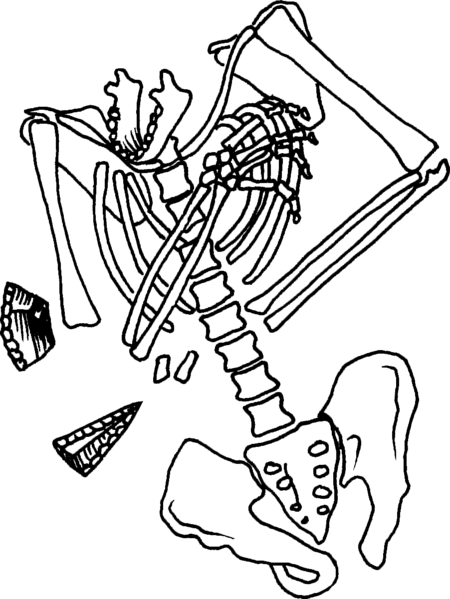
The cave was inhabited between 60,000 - 48,000 BP and is famous for its excavated finds of hominid remains, made under the direction of Professor Ofer Bar-Yosef. Dorothy Garrod and Francis Turville-Petre excavated in the cave in the early 1930s, but by far the most significant discovery made at Kebara Cave was that in 1982 of the most complete Neanderthal skeleton found to date. Nicknamed "Moshe" and dating to circa 60,000 BP, the skeleton preserved a large part of one individual's torso (vertebral column, ribs and pelvis). The cranium and most of the lower limbs were missing. The hyoid bone was also preserved, and was the first Neanderthal hyoid bone found.
For more information, click here. Or, Try these sources:
- Mithen, S.(2006). The Singing Neanderthals: The origins of music, language, mind, and body. Cambridge, MA: Harvard University Press.
- Schick, T. & Stekelis, M. "Mousterian Assemblages in Kebara Cave, Mount Carmel", Eretz-Israel 13 (1977), pp. 97–150.
- Goldberg, P. & Bar-Yosef, O., "Site formation processes in Kebara and Hayonim Caves and their significance in Levantine Prehistoric caves", in T. Akazawa, K. Aoki and O. Bar-Yosef (eds), Neandertals and Modern Humans in Western Asia, New York & London: Plenum Press, 1998, pp.?